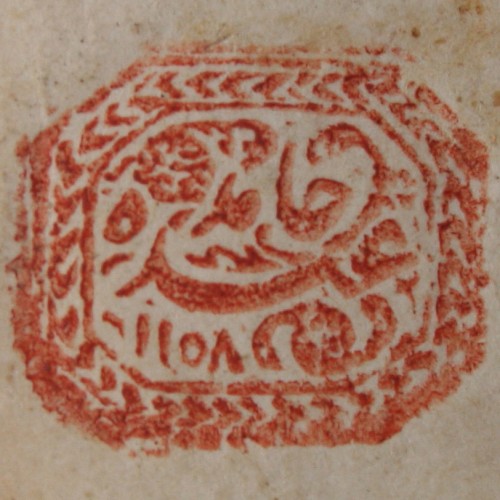The Chester Beatty Library Seals Project is up. Go get your tuğra on!
Category Archives: irresponsibly illustrated
The Superiority of Dogs

Folio from an Arabic translation of the Materia Medica by Dioscorides; recto: Outdoor scene with mad dog biting man (1224)
How can you not love a book titled The Superiority of Dogs over many of Those who wear Clothes? Ibn al-Marzubān’s 10th-century collection of quotes, anecdotes, and folklore on the virtues of dogs is held together by little more than the species it’s named after (logical narrative structure is for the weak!), but it’s a fun ride once you get past the non-sequiturs. G.R. Smith and M.A.S. Abdel Haleem’s 1978 translation does a nice job contextualizing the essay, which Smith and Abdel Haleem divide into two sections: “Man has gone to the dogs” and “Man’s best friend.”
Originally composed in response to a friendly challenge to demonstrate the moral decline of humanity (think pretentious point/counterpoint editorials in a campus newspaper), the book begins with a lament for the virtuous people who came before and who have left in their stead only the villainous. The main charges against humanity are insincerity and hypocrisy: today humans are merely “people who look like people” rather than actual people capable of genuine affection. The invective has a repetitive melancholy quality to it that extends and re-focuses the formulaic lament for the loss of the past with which poems of the period frequently began. It becomes clear that the division between an authentic interiority and a dissembling exteriority is a trait particular to humans, while animals are incapable of feigning affection (tricky critters like foxes are the exception rather than the rule).
The dog, for example, epitomizes the collapse of interior and exterior. It is all authentic surface. The dog protects its owner, it is loyal in hunting and guarding, it watches over one’s possessions, and by barking in response to cries for help it even guides those who are lost back to safety. Within the text there is an implied division between hunting dogs (presumably the pure-bred Saluki) and common dogs, although both exemplify the virtues that have slowly disappeared from humanity. Heroic dogs are rewarded for their loyalty and self-sacrifice with human privileges: several are allowed in domestic spaces that would normally be off-limits, one becomes a man’s drinking companion, and another receives his own mausoleum. These rewards hint at what we already know: that this essay isn’t really about dogs as much as it is about how people should (and rarely) behave. If this isn’t already obvious, it becomes hard to ignore when Ibn al-Marzubān recounts four nearly identical anecdotes in which dogs kill the adulterous wives and “friends” of their owners. These dogs are nothing if not normative. They sacrifice themselves for kings and children, and they punish the deceitful women and men who behave “like animals” as they flaunt social taboos like adultery and murder.
It’s hard to situate the essay in a culture that was ambivalent towards dogs at best. In one of the hadith (Sahih Muslim), the angle Gabriel has a date with prophet Muhammad to deliver the word of God, but he stands him up because there’s a puppy hiding under Muhammad’s cot. That said, the Hadith are pretty weird (remember that time Abu ‘Ubaida and his men spent nearly a month eating the better part of a whale?). Wild dogs were a menace and rabies was a legitimate concern, but, as Ibn al-Marzubān shows, domesticated dogs could sometimes out-human humans. Or rather, their virtue was super-human, like that of “the world’s most famous dog” Lassie.
 Featured image: The so-called Baptistery of Saint Louis
Featured image: The so-called Baptistery of Saint Louis


